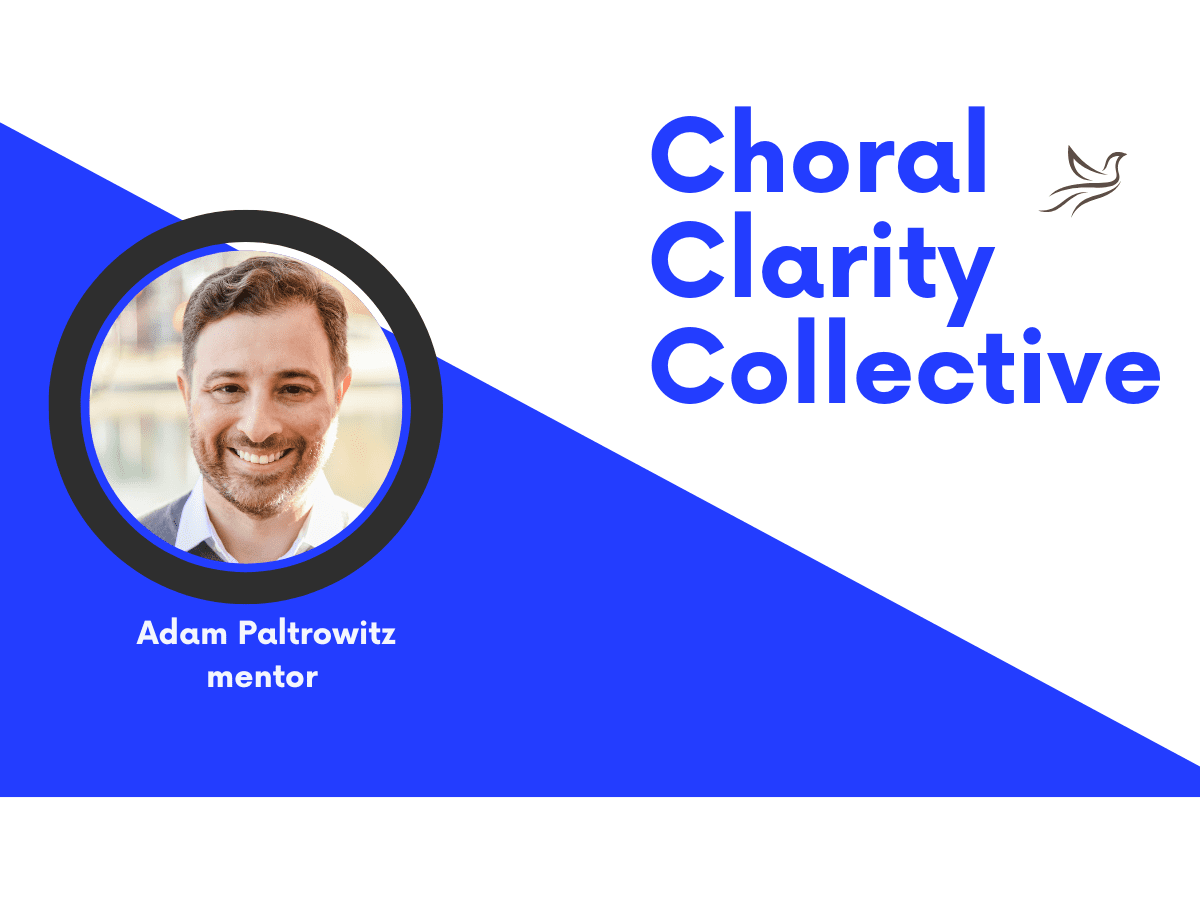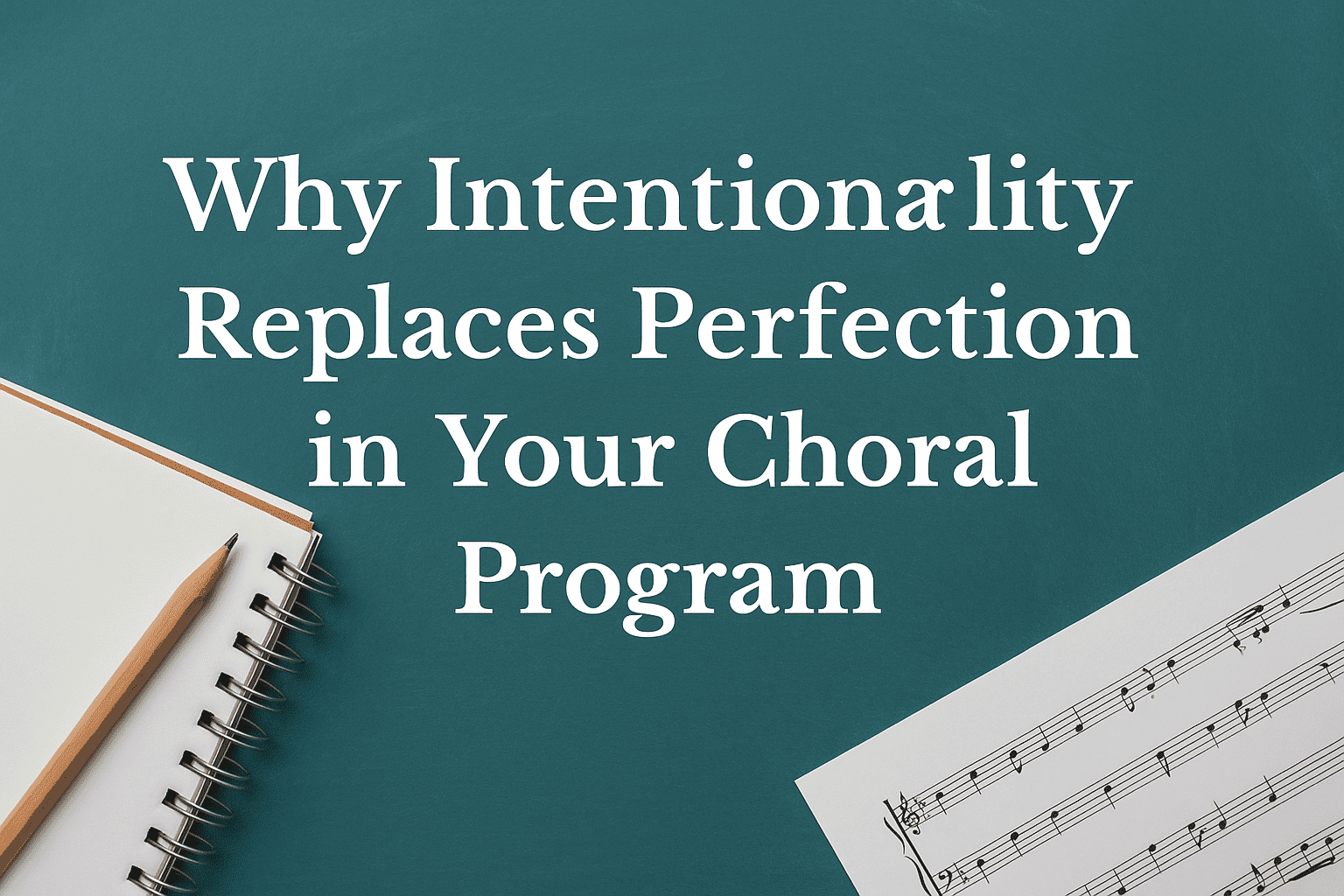Start With Your Mission, Not Your Rules
We all know classroom management matters. But if you try to “manage” students before you’ve defined why your program exists, you’re building on sand. Rules (or guidelines) without a deeper purpose feel like restrictions. Purpose turns expectations into a shared commitment.
“WHY should I remain quiet? WHY should I remain in my seat?” The answers might seem obvious to us, but if students don’t see the bigger picture—what they’re building, who they’re becoming, and why it matters—they’ll comply at best and resist at worst. A clear, compelling statement of purpose creates buy-in. It frames every behavior as a choice aligned with a goal students actually want.
When your why comes first, classroom management stops being a list of don’ts and becomes a pathway to something meaningful. Pair that purpose with a well-structured, fast-paced rehearsal that keeps every singer engaged and most behavior issues evaporate.
Why Purpose First Works
-
Purpose → Ownership. Students meet expectations when they connect them to a cause they believe in. Quiet isn’t about control; it’s about hearing each other so the ensemble can produce a unified sound. Staying seated isn’t about obedience; it’s about safety, efficiency, and musical momentum.
-
Clarity → Consistency. Your north star guides every decision—repertoire, traditions, travel, auditions, grading, phones, leadership—so the culture feels consistent.
-
Language → Buy-in. Explain every procedure through the lens of the why: “We do X because it helps us achieve Y.” That single sentence structure reshapes the room.
Inside the Choral Clarity Collective, Mindset & Mission is Phase 1 for a reason: it’s the foundation for everything else—classroom management, vocal technique, music literacy, grading, leadership, and beyond.
Try SIGHT READING FACTORY and save 10% using code: choralclarity
“But I Still Need Classroom Management…”
Absolutely—and it becomes easier when it flows from your why. We teach Guidelines and Procedures that serve the program’s aim, then train and rehearse them just like repertoire: explicit mini-lessons on what to do, brief practice reps, and calm, consistent redirect routines when students drift.
Concretely, we also build rehearsal skills such as body alignment while singing and how to hold and mark music.
Each skill is taught with a why (“because our purpose is ___, the guideline is ___”), practiced with quick reps, and reinforced with the same language every time. Layer that onto a tight rehearsal design—clear agenda, time-boxed segments, frequent reps with immediate feedback, and small doses of student leadership—and attention rises while redirections drop.
How To Write Your Mission (and Supporting Paragraph)
A strong program mission is short, memorable, and about who students become through choir, not just what they perform.
Step 1: Draft the statement.
Complete this sentence in as few words as possible (1 sentence):
“In this choir, we exist to…”
Common anchors: build community, pursue excellence, grow as musicians and people, serve our school and community through meaningful performances.
Step 2: Add the supporting paragraph.
In 3–4 sentences, clarify:
-
The transformation the choir offers each student (skills + character).
-
How the ensemble reaches that transformation (tangible, observable actions).
Step 3: Double-check everything
Hold every decision up to your north star.
If it helps you live the purpose, do it. If it doesn’t, rethink it.
Mission Statement Guidelines (quick worksheet)
1) One-sentence purpose:
“In this choir, we exist to…”
→ Focus on who students become and how you serve your school/community.
2) Supporting paragraph (3–5 sentences):
-
The transformation you promise (skills + character).
-
The rehearsal behaviors that make it possible (specific, observable actions).
-
Who you serve beyond the room (performances, school events, community impact).
3) Alignment check:
-
What repertoire, traditions, policies, and assessments clearly serve this?
-
What needs to change or go?
Flat.io – the best online notation program on the planet – save $$ with this link! (all of my pieces have been written on Flat.io over the past 5 years)
Where (and how) to use your statement
-
On the wall: Post it where everyone can see it—and reference it daily.
-
In your handbook & syllabus: Lead with the why; follow with guidelines that serve it.
-
Back-to-school night & concerts: Open with your “why” before your “what.”
-
Traditions & requests: Say yes/no by pointing to the north star—you’re protecting purpose, not rejecting people.
-
Student leadership: Ask section leaders to model and connect behaviors back to your stated aims.
What happens next
When you lead with purpose and run rehearsals that move—clear agenda, tight pacing, frequent reps, and student leadership—expectations gain context, students gain reasons, and your choices (big and small) feel obvious because they’re aligned.
Ready to put your mission on paper?
Connect with you free Digital Choral Clarity Mission Statement Coach to write your statement and supporting paragraph now: https://bit.ly/choral-clarity-mission-statement-coach.
Our mission statement coach was trained and follows the principles in my book, Build Your Dream Choral Program!
Want feedback and accountability after you draft it? Post it inside the Choral Clarity Collective and get community input, on-demand training, and live Q&A—starting with Phase 1: Mindset & Mission, then Classroom Management, Vocal Technique, Matching Pitch, Music Literacy, Grading for Growth, Student Leadership, and Exceeding Expectations.
Join the Choral Clarity Collective: https://www.skool.com/choral-clarity-mentorship-4913/about — just $35/month (sale price; no commitment).
To learn more about all that Choral Clarity offers, click here.
Table of Contents
Toggle







Leave A Comment